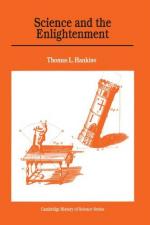
|
| Name: _________________________ | Period: ___________________ |
This quiz consists of 5 multiple choice and 5 short answer questions through Chapter 5, Natural History and Physiology.
Multiple Choice Questions
1. According to the narrator in Chapter 4, ________ and ________ were closely associated because they were still based to a large extent on the concept of the Aristotelian elements: earth, water, air, and fire.
(a) Zoology / biology.
(b) Chemistry / experimental physics.
(c) Biology / geography.
(d) Geology / geography.
2. According to Chapter 3, ________ was the most volatile and least substantial of all the elements; therefore, it was the chief agent of change, as witnessed by its role in combustion, fermentation, decomposition, and evaporation.
(a) Fire.
(b) Water.
(c) Air.
(d) Wind.
3. Who became the ablest and most productive mathematician of the eighteenth century, according to the narrator in Chapter 2?
(a) Newton.
(b) Euler.
(c) Lagrange.
(d) Bernoulli.
4. In Chapter 4, Abbe Condillac claimed that ________ was the best language because it had the best symbols.
(a) Sign language.
(b) Chinese.
(c) Algebra.
(d) Japanese.
5. Who was France's greatest hero of the Enlightenment partly because he was from England, the source of free thought and liberty and partly because he had solved the riddle of the planets, showing that their motions obeyed the same laws as motions on earth?
(a) Swift.
(b) Boyle.
(c) Fontenelle.
(d) Newton.
Short Answer Questions
1. Descartes's "quantity of motion" is equivalent to our modern principle of the conservation of ________.
2. Who claimed a community of atheists could live a completely moral existence, according to Chapter 1 of the book "Science and the Enlightenment"?
3. Joseph Black studied chemistry with ________ at Glasgow, serving for three years as his assistant, according to Chapter 4.
4. Who came out in support of vis viva in 1722 and concluded that "what was before only a dispute of words now becomes a dispute about real things"?
5. According to the beginning of Chapter 1, in 1759 the French mathematician ________ described a revolution that he saw taking place in natural philosophy.
|
This section contains 293 words (approx. 1 page at 300 words per page) |

|




